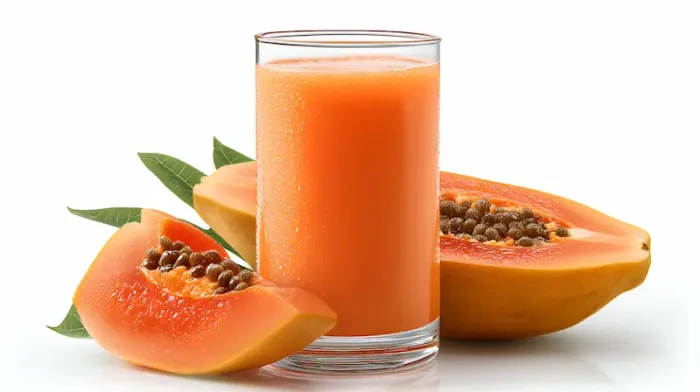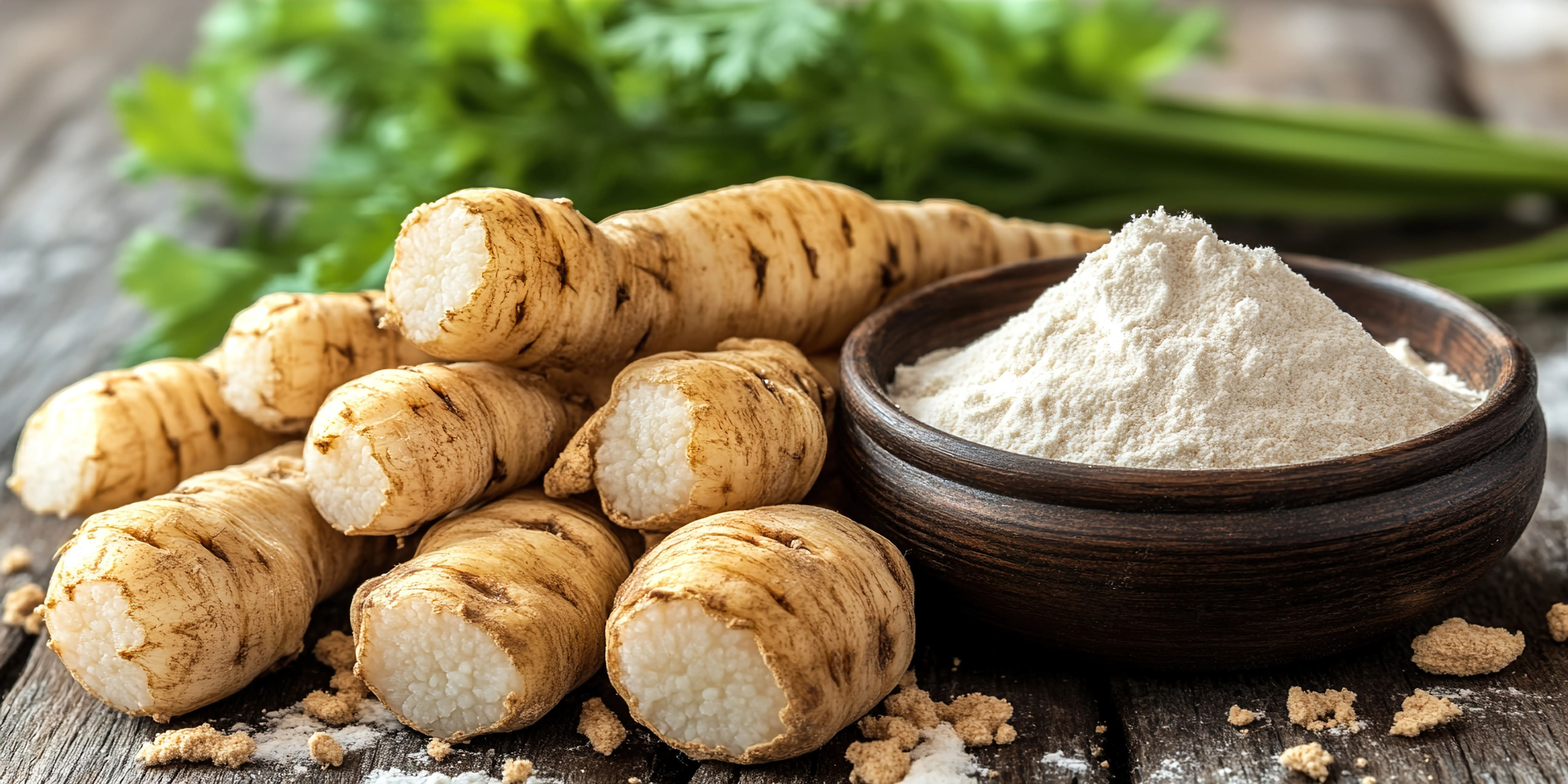Papaya in Ayurveda: Health Benefits and Uses
Papaya benefits in Ayurveda: nutrition, digestion, safe use, and simple recipes. See how ayurvedic fruits fit a healthy lifestyle, plus FAQs.

Written by Dr. J T Hema Pratima
Reviewed by Dr. D Bhanu Prakash MBBS, AFIH, Advanced certificate in critical care medicine, Fellowship in critical care medicine
Last updated on 17th Nov, 2025

Introduction — Why Papaya in Ayurveda Matters
Papaya is a bright, delicious tropical fruit that shows up often when people talk about ayurvedic fruits and whole-food healing. In everyday nutrition, papaya benefits include fiber for digestion, vitamin C for immune support, and antioxidants for overall wellness. Ayurveda, a traditional system of health from India, encourages seasonal, fresh fruits to support digestion and balance. Modern research agrees that enjoying a variety of fruits—papaya included—can be part of a healthy lifestyle.
In this guide, we look at papaya through an Ayurvedic lens while keeping the facts grounded in current nutrition science. You’ll learn practical ways to use papaya, who should be careful, and how to handle it safely.
Papaya at a Glance
• What it is: A tropical fruit with sweet, orange flesh and small, black seeds.
• What it offers: Fibre, vitamin C, vitamin A (as carotenoids), folate, potassium, and water for hydration.
• Taste and texture: Mildly sweet, soft, and juicy when ripe.
• How it’s used: Eaten fresh, blended in smoothies, added to salads, or used as a tenderiser in marinades (thanks to natural enzymes).
Papaya and the Ayurvedic Approach to Fruit
Ayurveda emphasises eating simple, fresh, seasonal foods that are easy to digest. Within this approach, fruit is often enjoyed:
• Ripe rather than unripe
• At room temperature
• On its own or with light add-ins (like a sprinkle of lime and mint)
• Mostly earlier in the day when digestion is considered strongest
These traditional tips align with modern nutrition basics: ripe fruit tends to be easier on digestion for many people, and eating fruit helps you meet daily fibre and micronutrient needs. While Ayurveda has specific concepts (like agni, or digestive fire), you do not need to follow a strict plan to enjoy papaya safely. If you already enjoy ayurvedic fruits, papaya fits right in as a versatile, nutrient-rich choice.
Science-Backed Papaya Benefits
Below are papaya benefits supported by mainstream nutrition research. Exact amounts vary by fruit size and ripeness, but the takeaways are consistent.
Digestive Support (Fiber + Water)
• Papaya provides dietary fibre, which helps support regular bowel movements and overall gut health.
• Adequate fibre intake is linked with better digestion and lower risk of heart disease and type 2 diabetes over time.
Simple tip: Start with a small portion if you’re increasing fibre to minimise bloating. Drink water throughout the day.
Immune and Skin Support (Vitamin C)
• Papaya is rich in vitamin C, an antioxidant that supports immune function and helps your body make collagen, which is important for skin and connective tissue.
• Antioxidants help reduce oxidative stress from everyday living.
Simple tip: Pair papaya with a squeeze of citrus or a few berries for a vitamin C–rich snack.
Eye and Skin Health (Vitamin A as Carotenoids)
• The orange colour of papaya comes from carotenoids, which the body can convert into vitamin A. Vitamin A supports healthy vision, skin, and immune function.
• A varied intake of colourful fruits and vegetables helps you get a spectrum of antioxidants.
Heart Health (Fiber + Potassium)
• Fibre helps reduce LDL (“bad”) cholesterol when part of an overall healthy diet.
• Potassium helps the body maintain normal fluid balance and supports healthy blood pressure when combined with a diet low in sodium.
Weight-Friendly Snack (Low Energy Density)
• Papaya has a high water content and offers sweetness with relatively few calories for the volume. This makes it a satisfying snack that can fit into a balanced eating plan.
How to Use Papaya the Ayurvedic Way?
Ayurveda values simple food combinations and mindful eating. Here’s how to bring that into your kitchen:
• Choose ripe fruit: Look for papayas that give slightly to gentle pressure and have a sweet aroma. The skin may turn more yellow as they ripen.
• Eat at a comfortable time: Many people find fruit easiest to digest in the morning or midday.
• Keep it simple: Enjoy papaya on its own or with light, fresh add-ins. Traditional practice often avoids mixing fruit with heavy meals.
• Savor slowly: Eating mindfully can help you notice fullness cues and enjoy the natural sweetness.
Modern nutrition takeaways
• Portion: A general fruit serving is about 1 cup fresh fruit. Adjust to your energy needs and blood sugar goals.
• Pair smartly: If you prefer to eat fruit with meals, combining papaya with a source of protein or healthy fat (like yoghurt with live cultures, nuts, or seeds) can help you feel fuller longer. If you are lactose intolerant, choose lactose-free or plant-based options.
• Hydrate: Fibre works best with fluids. Sip water, especially as you increase fruit intake.
Practical Ways to Add Papaya to Your Day
Here’s how to add papaya to your diet:
• Papaya + Lime: Dice ripe papaya, squeeze fresh lime, add a pinch of sea salt and chopped mint.
• Breakfast bowl: Papaya chunks with plain yoghurt and a spoonful of toasted pumpkin or sunflower seeds.
• Smoothie: Blend papaya with water, ginger, and a handful of spinach. Add ice as preferred.
• Simple salad: Papaya, cucumber, red onion, and cilantro with a squeeze of lemon.
• Tenderising tip: Use mashed papaya in a marinade to help tenderise meats before cooking. Rinse before cooking to avoid over-tenderising.
Safety, Allergies, and Smart Handling
Most people can enjoy papaya as part of a varied diet. Here are a few considerations:
• Allergies and sensitivities: If you have a known food allergy, start with a small amount and watch for itching, swelling, hives, or stomach upset. Seek medical care if you notice symptoms of an allergic reaction.
• Pregnancy and medical conditions: Ripe papaya eaten as food is commonly included in healthy diets. If you are pregnant, breastfeeding, have diabetes, kidney disease, or take prescription medications, discuss your overall fruit intake with your healthcare professional.
• If you use enzyme supplements: This article focuses on the fruit itself. If you’re considering papaya enzyme (papain) supplements, speak with your clinician first, especially if you take blood thinners or have upcoming surgery.
• Food safety matters: Wash your hands, cutting boards, and knives before and after handling papaya. Rinse the whole fruit under running water before cutting to avoid transferring germs from the skin to the flesh. Refrigerate leftovers within two hours.
Who Might Want to Be Extra Cautious?
• People with kidney disease: Potassium intake sometimes needs monitoring; your healthcare team can advise on portions.
• People managing blood sugar: Fruit can fit into a balanced plan—portion size and overall carbohydrate intake matter. Monitor your response and work with your clinician or dietitian.
• Those with a history of food allergies: Try a small amount first and be aware of symptoms.
Sample 1-Day Papaya Plan (Flexible)
• Morning: Papaya-lime bowl with a sprinkle of chia seeds; water or unsweetened tea.
• Lunch: Grain bowl with beans, leafy greens, roasted vegetables; papaya slices on the side.
• Snack: A small papaya smoothie with ginger and ice.
• Dinner: Grilled fish or tofu, steamed vegetables, and a whole grain. Skip fruit right before bed if you notice reflux; have it earlier in the evening instead.
Consult Top Specialists
Consult Top Specialists

Ms. Sushma Jaiswal
Dietician
42 Years • M.Sc.(Food & Nutrition)
Bengaluru
Swasthya Nutrition, Bengaluru

Ms Malabika Datta
Dietician
19 Years • Bsc (Clinical Nutrition & Dietetics), Msc (Dietetics & Food Service Management)
Kolkata
Malabika’s Diet Clinic, Kolkata

Neelanjana J
clinical nutrition
3 Years • Bsc., Msc. Nutrition and Dietetics.
Bengaluru
Apollo Clinic, JP nagar, Bengaluru

Dr Darshana R
General Physician/ Internal Medicine Specialist
15 Years • MBBS, MD, DNB (Internal Medicine), Diploma in Allergy, Asthma and Immunology , Fellowship in Diabetes
Bengaluru
Apollo Clinic, JP nagar, Bengaluru
Ms Chetu Singhi
Dietician
20 Years • MSC Dietetics & Nutrition
Kolkata
RB Diagnostic - Dietician Diet2fit Chetu Singhi, Kolkata
More articles from General Medical Consultation
Frequently Asked Questions
1) Is papaya good for digestion?
Yes. Papaya provides dietary fibre and water, which support regular bowel movements. Including fibre-rich foods like fruits and vegetables is linked with better digestive health.
2) How does papaya fit among ayurvedic fruits?
Ayurveda encourages fresh, ripe, seasonal fruits. Papaya fits this pattern well and is often enjoyed simply—on its own, at room temperature, and earlier in the day. This approach aligns with modern nutrition advice to eat a variety of fruits for vitamins, minerals, and fibre.
3) Can people with diabetes eat papaya?
Often yes, in portions that fit your meal plan. Pay attention to total carbohydrates and check your blood glucose response. Pairing fruit with protein or healthy fat can help with satiety. Work with your clinician or dietitian for personalised guidance.
4) Is papaya safe during pregnancy?
Ripe papaya as food is commonly included in healthy diets. As with all produce, follow safe handling and washing practices. If you have specific questions or conditions, discuss them with your prenatal care provider.
5) What is the best time to eat papaya?
Any time that feels good for your digestion. Many people like fruit in the morning or midday. If you notice heartburn late at night, try having fruit earlier. Listen to your body and adjust.




